On Day 3, we reach our highest elevation thus far at 4600m (15,100 ft) for our packed lunch at Lava Tower. It is about the same elevation as the peak of Mt Meru, Africa’s second tallest peak, which we saw in the distance peeking above the clouds.
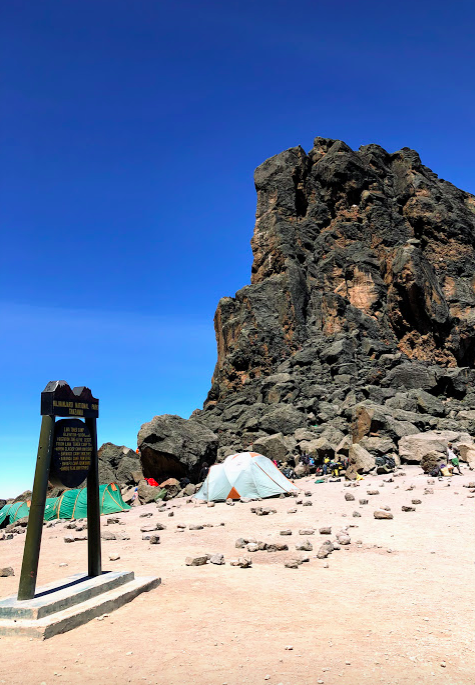
We experienced our first symptoms of altitude sickness here. I was too nauseous to eat lunch. I couldn’t even think about eating. The good news is that we were descending into camp at a lower altitude, which theoretically should help me recover. The bad news is that we still had to descend for two more hours and my trekking poles felt more like a walker as I hobbled down, weak from not eating and tired from the heat of the sun. I recovered after a few (miserable) hours at the rocky and dusty Baranco Camp at 3900m (12,800 ft).
Since we followed the mountaineering code of ‘walk high, sleep low’ to acclimate to the altitude, I was able to eat the popcorn with tea time, and had a full appetite back for dinner. My husband had a headache and only took a few bites of dinner, but recovered by the morning after a good night’s sleep. All stories considered, it seems that we had the least amount of sickness. The bathrooms showed stories of vomit and diarrhea with such urgency that they don’t make it into the squatty potty hole.
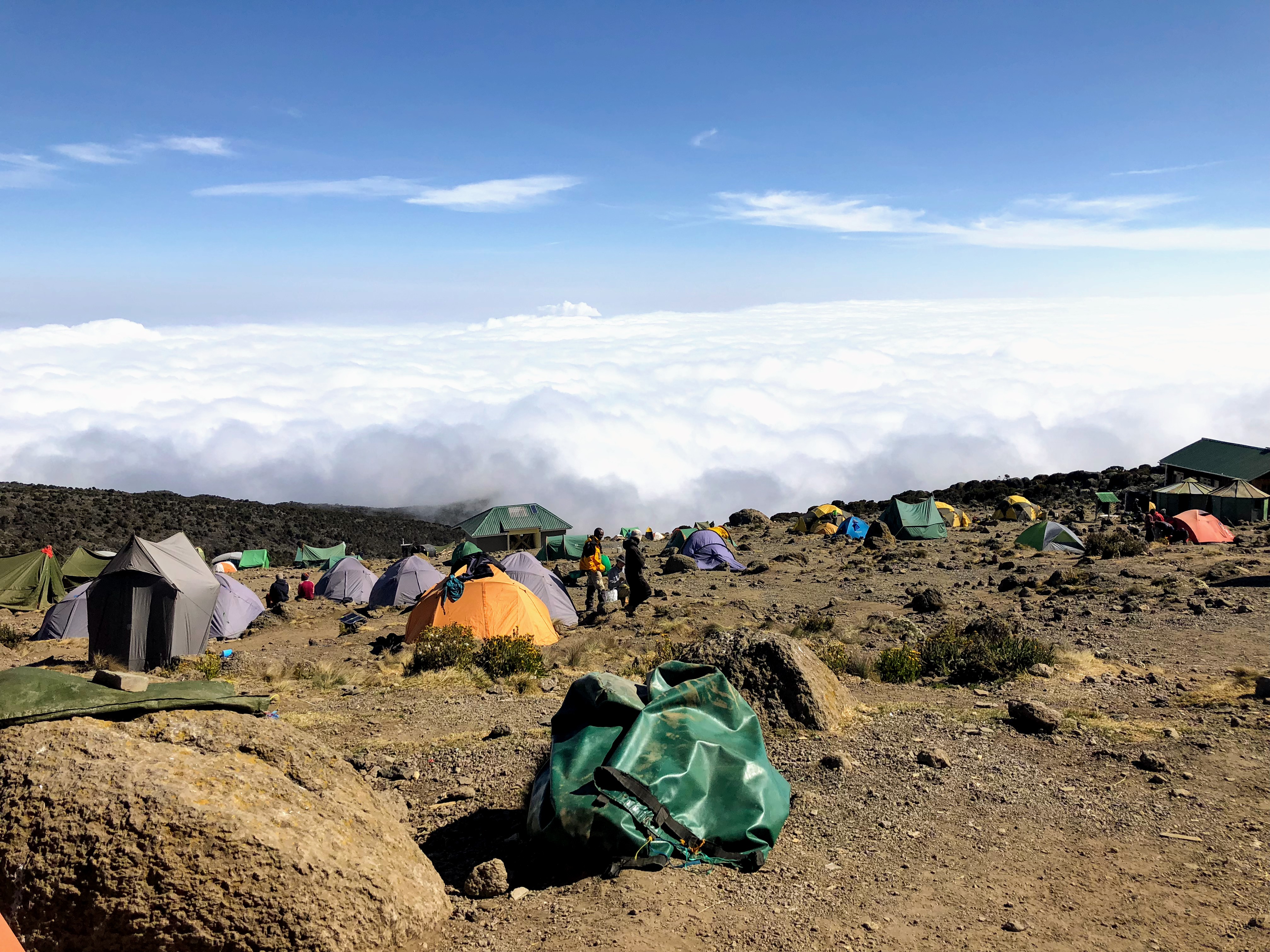
Day 4 is considered a “rest day” since the previous day is notorious for hikers getting altitude sickness symptoms. “Rest” is more of an active recovery because it is still a five hour hike; however, we don’t reach as high of an elevation – though we are still at an altitude of 4200m / 13,800 ft – and we cover 5.5 km (3.4 mi) – about half of yesterday’s distance. The morning route begins by descending into a huge ravine, then climbing up the Great Barranco Wall, which divides us from the southeastern slopes of Kibo (which, our guide told us, literally means “wow!” – the explorers’ first reaction upon seeing it). The climb is not technical, but it required us to put our trekking poles away and use our hands to scramble up the rocks. From there, we have a steep hike up to Karanga Camp, set at 3963m (13,000 ft).
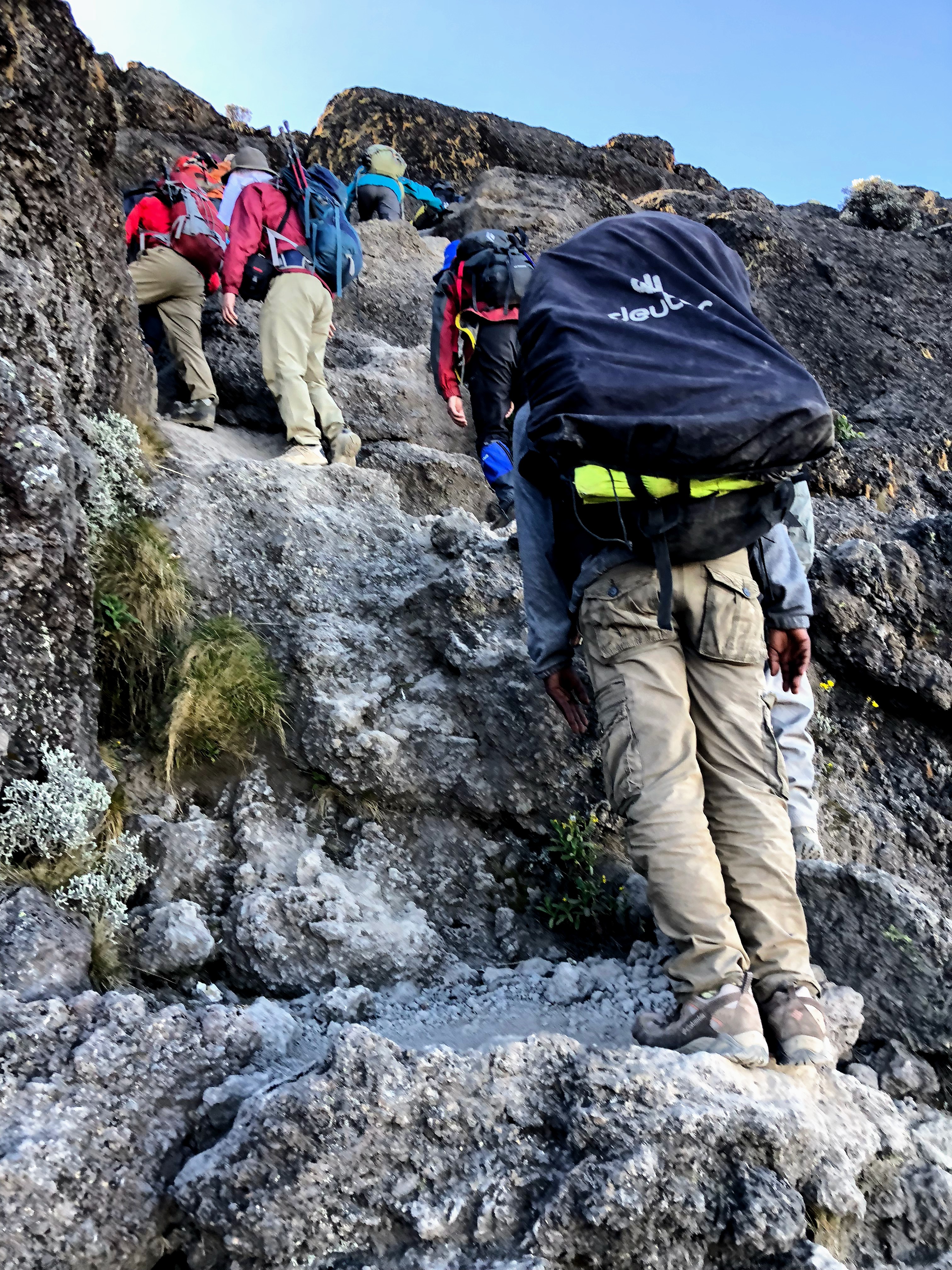
Day 5 takes us to base camp (Barafu) at 4640m (15,200 ft). This is the same elevation that made us sick two days prior, but our bodies have acclimated now and we do not feel any symptoms. There is only rock and dirt at this point, no vegetation. It is a slow, steep walk up desolate scree slopes. The hike is only 3 km (1.9 mi), so it is classified as “easy”, but we arrive in 3 hours, walking slowly, because there is definitely less oxygen getting into your lungs up here. Even for such a short stretch, I drank over two liters of Nuun electrolyte water to stay hydrated.
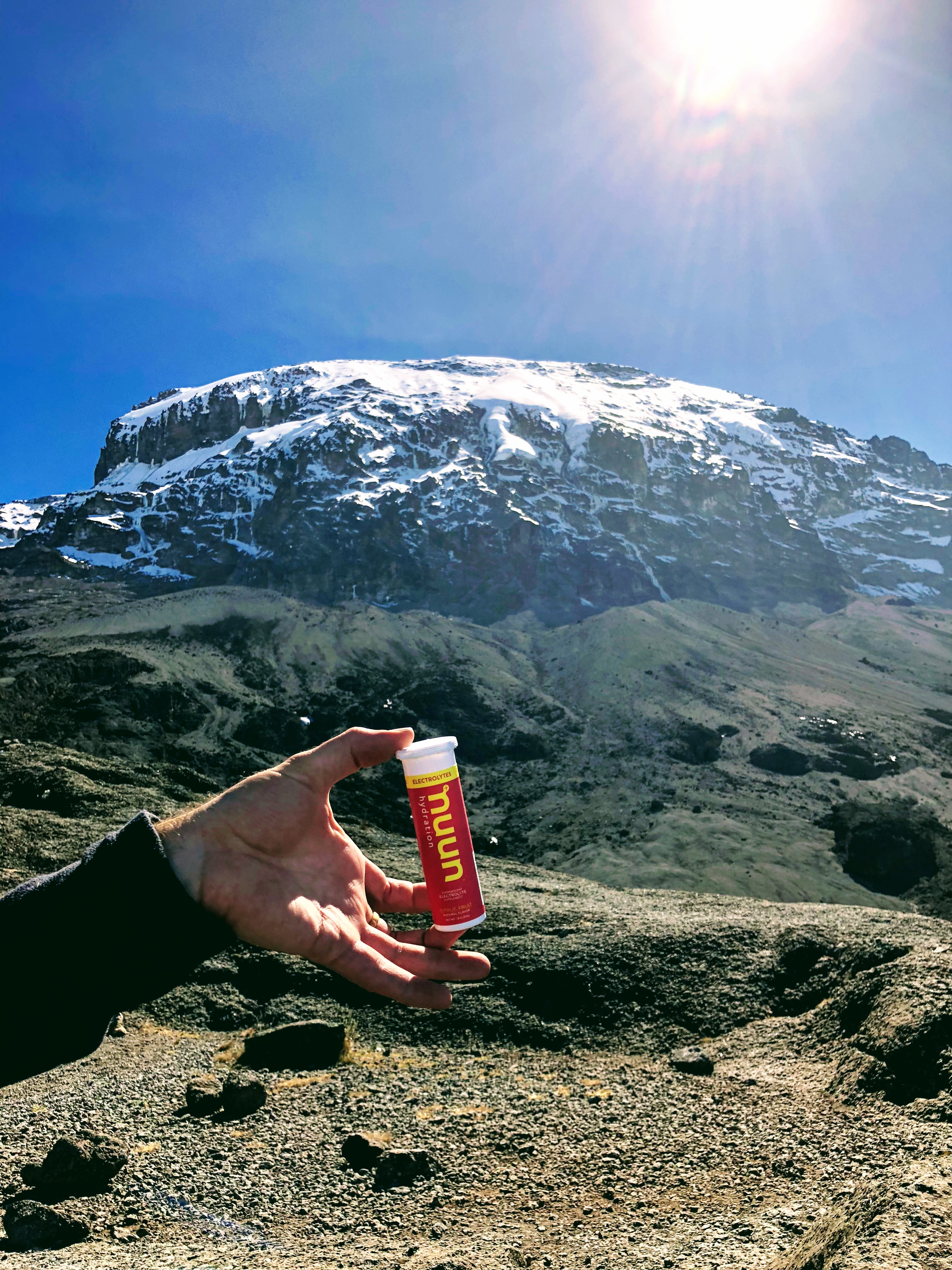
At camp, we eat and rest to prepare for a long summit night ahead of us. We refilled our water and added more electrolytes to stay hydrated as we anticipated the journey ahead. We still felt strong, way better than I expected to feel at this point, and had no symptoms of altitude sickness. Our guide joked that we didn’t even need to rest this afternoon, we could just go straight to the summit in one shot. It felt good to laugh and receive a surge of confidence at the same time. The crew gave us a knowing nod. We were going to make it.
We began around midnight and hiked slowly through the cold, dark night. After the first 30 minutes of hiking, my water freezes. We press on. It is a long, slow process of putting one foot in front of the other. My face is tingling, and it’s not because of the cold. Each breath is intentional since the percent of effective oxygen is half of what we are accustomed to at sea level. As I purposefully slowed my breathing, I gained power over my anxiety with every inhale. My breath grounded me in my vision of success and made the doubts irrelevant. I created a mental movie of what it would take to reach the peak, and the daunting aspects of summit night faded from my mind as I played it on repeat in my head again and again. I kept positive phrases at the tip of my tongue to battle the voices of doubt and insecurity, but mental strength is more than being ever optimistic in the face of challenges.
Mental strength is maintaining a clear vision of your success: what it looks like and what it feels like. You need to be able to taste it before you arrive there. That’s what keeps you going.
And so we staggered on into the night. The summit is lit by the moon, and the trail is dotted with lights from headlamps zigzagging up the mountain. We become immersed in the rhythm of our steps until the sun begins to rise and the crater rim is in sight. We put crampons over our boots to get more traction on the icy footholds, which greatly increased my pace and my morale. Each step felt surer. The summit sign came into view. I felt like I was charging towards it, but in reality it was still a one-hour gradual walk away, one determined step at a time. We got to Uhuru Peak (5895m / 19,341 ft) at 7:40am and I embraced the sign. We made it.
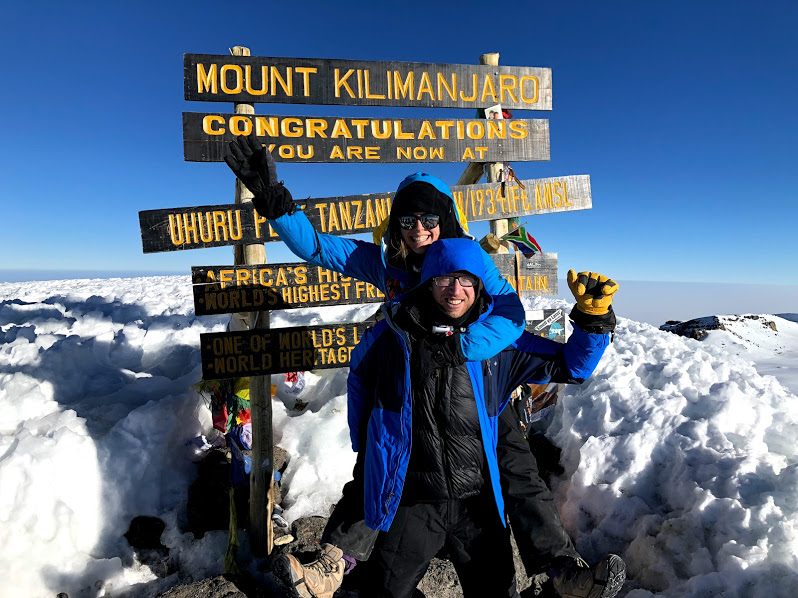
Africa’s highest peak, at 19,341 ft.
The weather warmed up quickly once the sun was out, and we stripped off all of our heavy layers before the big descent. We took an alternate route back to base camp, which mostly felt like sliding down dirt with some rocks. The downhill was tough on the knees and my toes crammed into the ends of my boots, but there was more oxygen and sunshine, so I felt happy.

Our crew met us about an hour from the bottom to congratulate us, and walked with us the rest of the way down to base camp. We had about an hour to rest, and then another hour to eat lunch and pack up before our 2.5 hour walk down a dusty trail to High Camp where we slept very well that evening.
We had less, but no lack.
I felt an inner tension the whole way down the mountain. I wanted to remain in its simplicity. We had less out there, but there was no lack. At the summit I found that dreams become real, excess is left behind, and all that remains is what actually matters.




